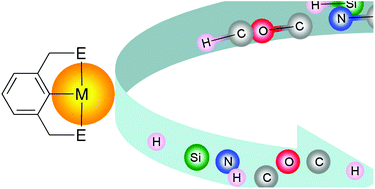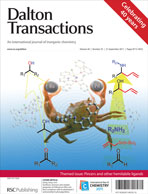Cleavage of unreactive bonds with pincer metal complexes
Abstract
Since the first reports some three decades ago, the chemistry of pincer metal complexes has seen a tremendous development with impact on materials chemistry, supramolecular chemistry, bioorganometallics, and, presumably most significantly, on (catalytic) bond making and breaking processes. The remarkable progress is due to a large extent to the well-defined nature and tunability of the pincer

- This article is part of the themed collection: Pincers and other hemilabile ligands

 Please wait while we load your content...
Please wait while we load your content...